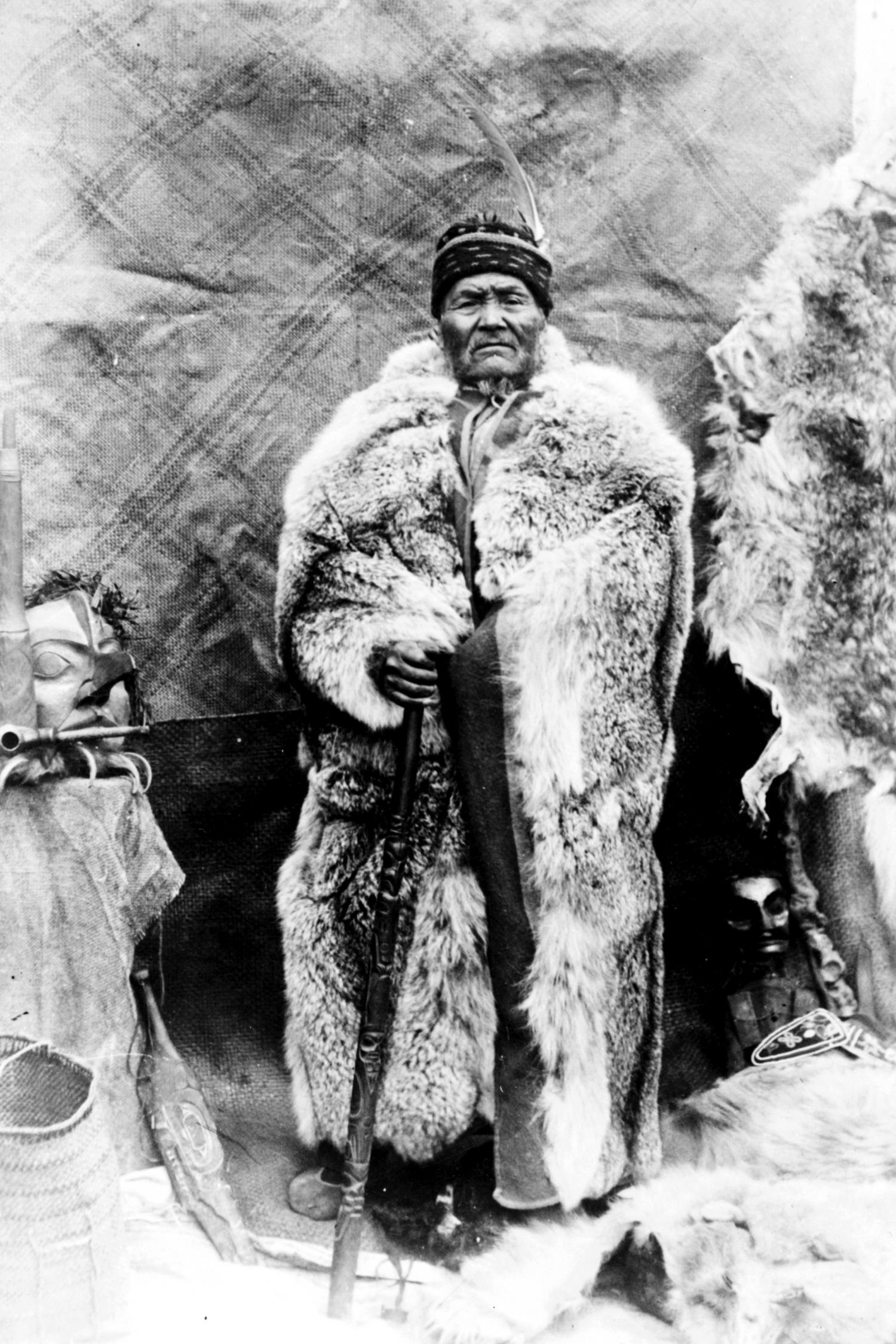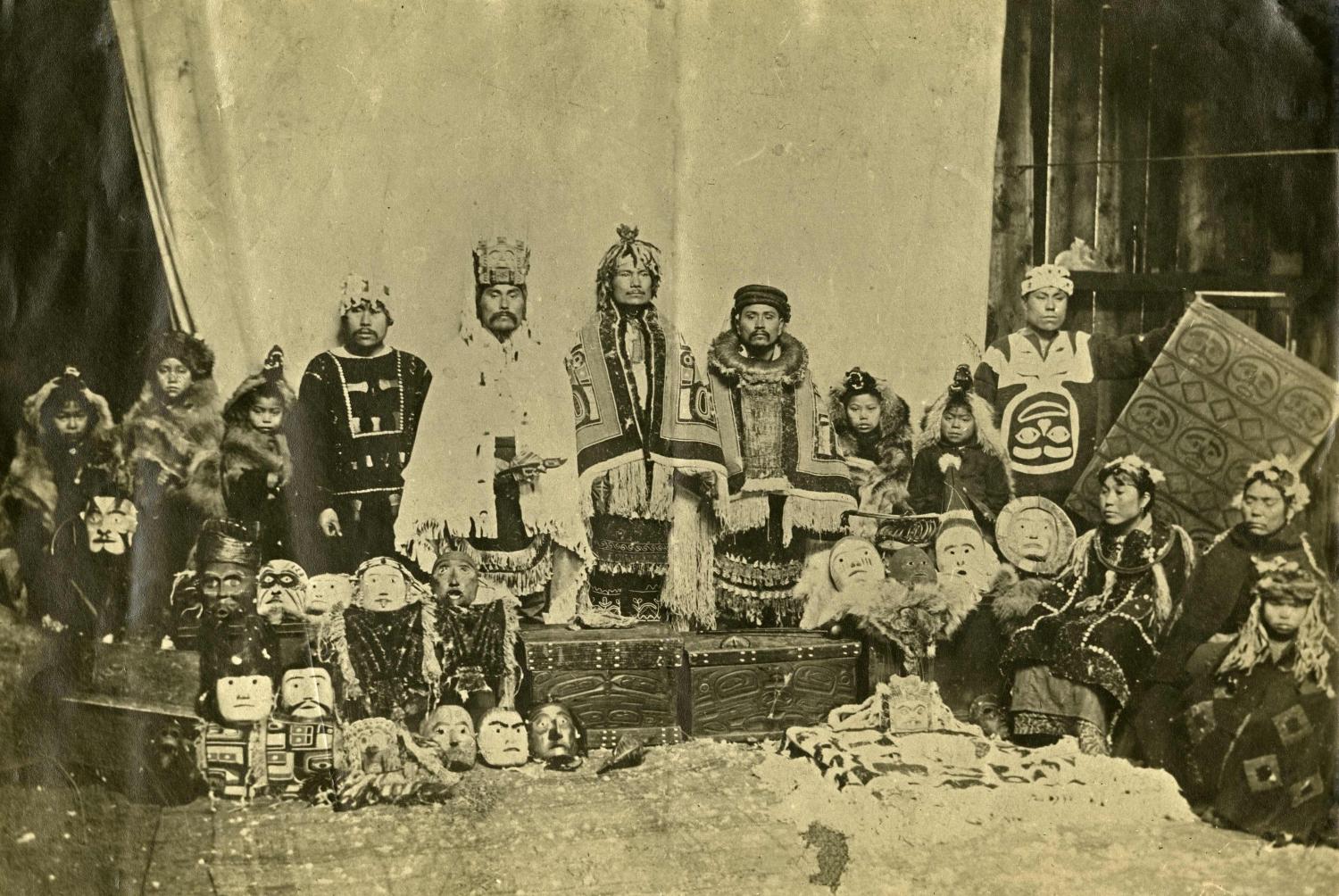Nisga’a Challenge Land Loss
Chief Mountain’s visit to Victoria kicks off a century-long land rights campaign
Date: 1881
The Nisga’a people have lived in the Nass Valley in northwestern British Columbia for millennia. But with the arrival of Europeans in the late 18th century, the Nisga'a gradually began to lose control of their ancestral territory. After B.C. joined Canada in 1871, the province herded the Nisga’a onto reserves. For decades, the “people of the Nass River” had watched settlers and Christianity erode their traditional way of life, while losing much of their population to devastating foreign disease. Now the land that had long sustained the Nisga’a was officially being taken from them, without consultation or compensation.
What’s more, the land grab appeared to violate Britain’s own policy. Though its original intent remains disputed, the Royal Proclamation of 1763 recognized Indigenous title to land in North America. It said Britain had a responsibility to extinguish that title through a treaty process before claiming additional territory. Codified into Canada’s 1982 constitution, the document remains law. However, at the time of confederation, B.C.’s government, led largely by Lieut. Governor Joseph Trutch, denied the existence of Aboriginal title altogether. Once the land’s only inhabitants, First Nations in British Columbia were now pushed onto reserves considerably smaller than in other parts of the country.
In the 1880s, the Nisga’a began a crusade to regain their land that would last nearly 120 years. Early protests by the Nisga’a ranged from meetings with government officials to carefully-worded petitions to peaceful blockades. The earliest documented event occurred in 1881 when famed Nisga’a leader Chief Mountain, also known as Chief Israel Sgat’iin, led a delegation to Victoria to protest the government’s reserve allocations and a growing encroachment of farmers, fishermen and loggers.
Six years later, Nisga’a chiefs, accompanied by chiefs from the neighbouring Tsimshian Nation, returned to Victoria but were barred from entering the legislature. In a meeting held at Premier William Smithe’s house, Tsimshian Chief Richard Wilson said he simply wanted to see his people “as free as the whites.” The Tsimshian and Nisga’a pushed for larger reserves in addition to formal treaties. But Premier Smithe feigned confusion at the mention of treaties — “What do you mean by a treaty?” — though several had already been signed on Vancouver Island. "When the white man first came among you," he told his visitors, "you were little better than wild beasts of the field."
Later that year, the provincial government sent a royal commission up north to meet with the Nisga’a in hopes of resolving the land dispute. The officials told the Nisga’a that the B.C. government didn’t recognize their claim to the land, prompting incredulous laughter from the chiefs. Then they realized it wasn’t a joke.
“We took the Queen’s flag and laws to honour them. We never thought when we did that she was taking the land away from us,” said Nisga’a Chief Charles Russ. “It is ours to give to the Queen, and we don’t understand how she could have it to give to us.” He continued: “We want the words and hands of the chiefs on both sides — Indian and government — to make a promise on paper [...] that will be not only for us but for our children and forever." With that, Chief Russ said, “it will be finished.”
In 1890, the Nisga’a established a committee to further lobby for land rights, though its busiest period came in the early 20th century. In 1908, the land committee issued a petition that asserted ownership of the Nass Valley. Two years later, the organization released a notice stating that no settlers would be allowed into the valley until a treaty had been brokered. Eventually, the group’s activity was deemed illegal when the Canadian government amended the Indian Act in 1927 to prohibit fundraising to advance land claims. It would take another 70 years before the Nisga’a and federal government put pen to paper and finally signed a treaty.
Sources:
- Canada Takes Control, 1871-1911. Great Bear Rainforest Trust, 2018, https://greatbearrainforesttrust.org/wp-content/uploads/2019/11/7-Canada-Takes-Control-1871-1911.pdf.
- Foster, Hamar. "Honouring the Queen’s Flag: A Legal and Historical Perspective on the Nisga’a Treaty." BC Studies, no. 120, 1998, doi:https://doi.org/10.14288/bcs.v0i120.1475.
- ---. "Honouring the Queen’s Flag: A Legal and Historical Perspective on the Nisga’a Treaty." BC Studies, 1999, pp. 11–35.
- Gosnell, Chief Joe. "Be Strong, Be Steadfast, Be True: A Speech on the Nisga’a Final Agreement Act." BC Booklook, 2001, https://bcbooklook.com/other-be-strong-be-steadfast-be-true-a-speech-on-the-nisga-a-final-agreement-act/.
- Gosnell, Eli, and Titus Nysick. Nisga’a: A Struggle for Survival. CBC, 23 Mar. 1978, https://www.cbc.ca/archives/entry/the-struggle-of-bcs-nisgaa.
- Hurley, Mary C. The Nisga’a Final Agreement. PRB 99-2E, http://www.publications.gc.ca/Collection-R/LoPBdP/BP/prb992-e.htm.
- LaBoucan, Guuduniia. "Nations in Waiting: British Columbia’s First Nations Are in a Unique Situation Regarding Treaties." Canada’s History, 30 Apr. 2018, https://www.canadashistory.ca/explore/politics-law/nations-in-waiting.
- Nelson, Charmaine. Racism, Eh? Captus Press, 2004.
- Nicholls, Barrie. "Aboriginal Land Title: The Nisga’a’s Fight for Sovereignty." The Ascendant Historian, vol. 3, no. 1, 2015, pp. 54–67, https://journals.uvic.ca/index.php/corvette/article/view/13534
- "Nisga’a Final Agreement 2001 Annual Report." Government of Canada, 15 Sept. 2010, https://www.rcaanc-cirnac.gc.ca/eng/1100100031762/1551117753251.
- Nishga Nation or Tribe of Indians. Petition to His Majesty’s Privy Council. 21 May 1913, https://www.nisgaanation.ca/sites/default/files/1913%20Petition.pdf.
- Penikett, Tony. Reconciliation. D & M Publishers, 2009.
- Powell, J. v., and Vickie D. Jensen. "Nisga’a." The Canadian Encyclopedia, 7 Feb. 2006, https://www.thecanadianencyclopedia.ca/en/article/nisgaa.
- Raven, Heather, et al., editors. Let Right Be Done: Indigenous Title, the Calder Case, and the Future of Indigenous Rights. UBC Press, 2007.
- "Royal Proclamation, 1763." Indigenous Foundations, 2009, https://indigenousfoundations.arts.ubc.ca/royal_proclamation_1763/.
- "The Creation of the Nisga’a Lisims Government." BC Learning Network, http://bclearningnetwork.com/LOR/media/fns12/pdf/Module4/4.2%20The%20Nisgaa%20Treaty.pdf. Accessed 8 June 2021.
- "The Indian Act." BC Learning Network, http://bclearningnetwork.com/LOR/media/fns12/pdf/Module2/2.3%20B1%20The%20Indian%20Act%201876.pdf. Accessed 8 June 2021.
- "Timeline." Nisga’a Lisims Government, https://www.nisgaanation.ca/timeline. Accessed 8 June 2021.
- Union of British Columbia Indian Chiefs. Stolen Lands, Broken Promises: Researching the Indian Land Question in British Columbia. 2nd ed., Union of British Columbia Indian Chiefs, 2005, https://d3n8a8pro7vhmx.cloudfront.net/ubcic/pages/145/attachments/original/1508270064/Stolen_Lands_Broken_Promises.pdf?1508270064.





